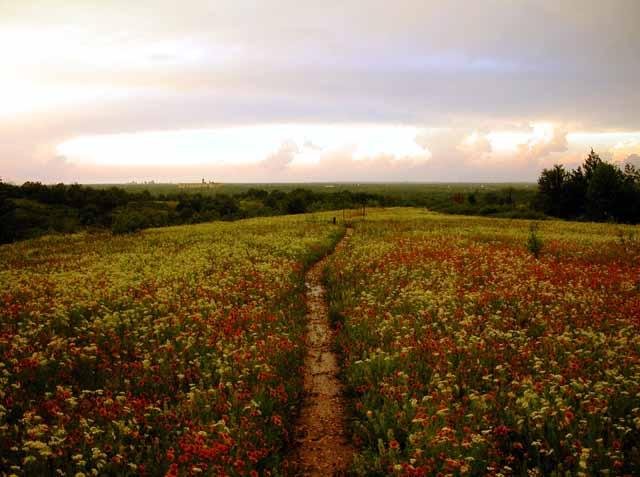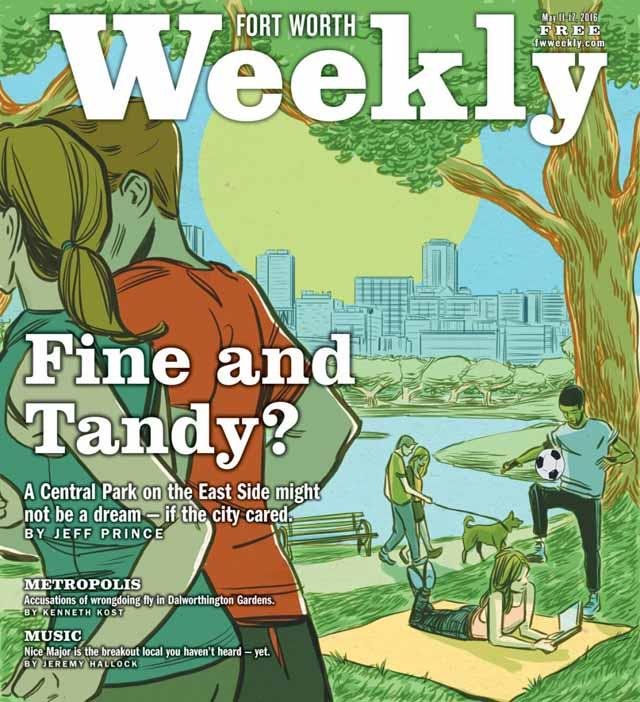Prairie Notes #114: A Sense of Prairie
Prairie Notes are monthly photo/journal observations from Tandy Hills Natural Area by Founder/Director, Don Young. They include field reports, flora and fauna sightings, and more, mixed with a scoop of dry humor and a bit of philosophy.
They are available free to all who get on the FOTHNA email list.
A Sense of Prairie
Prairie Notes #114
June 1, 2016
1) A Sense of Prairie
2) Field Report - May
3) BioBlitz Notes
4) Fine and Tandy?
5) Forest School on the Prairie
6) Mystery Meadow
7) Prairie Proverb(s)
1) A Sense of Prairie
Over 12 years and 113 issues of Prairie Notes, I've encouraged you to come on in to Tandy Hills because there is so much to SEE. The amazing wildflowers, grasses and hills so easily seduce the eye. That's understandable, I suppose, because we humans are primarily visual in our interaction with the world. But to really SEE Tandy Hills, you need more than your eyes.
To fully experience Tandy Hills it takes all five traditional senses you learned as a child and a few others you maybe didn't know you have. Sight, touch, taste, smell and hearing, of course, but equally important perceptors, especially on these prairie hills are, a sense of balance (equililbrioception), a sense of temperature (thermoception), sense of direction (magnetoception), a sense of movement and relative positions of body parts (proprioception) and more. You might even experience a sense of pain (nociception) or a sense of time (chronoception).
Our sense of hearing is possibly our least utilized sense on the prairie. Tandy Hills' urban location, near the center of the 11th largest city in the country, is not exactly a soundscape of quietitude, but its 160-acres are still a good place to listen to the natural world, especially down in the bottom or when the wind is out of the south. It helps to practice mindful listening.
And what might one hear when tuning in the Tandy Hills soundscape? Geophonic sounds such as, wind blowing through the trees, the grasses and tower wires, raindrops slapping against tree leaves, creek water running over rocks. Biophonic sounds like bird calls, buzzing insects, coyote yips. Anthropophonic sounds would be traffic on I-30 on the north, train noise from the south, the sound of your boots crunching through creek bed gravel below or a helicopter seraching for a missing Alzheimer patient above or your own voice whistling as you walk. You might even, on occassion, perceive the mysterious sound to urban-dwellers called, silence.
The sense of smell on a prairie can be intoxicating. Some examples are: Petrichor, that earthy smell after a rain is very sweet on the limestone hills, the spicy scent of Trailing Ratany (Krameria lanceolata), the lemony scent of Mock Pennyroyal (Hedeoma reverchonii) the swoonimg perfume of Nodding Ladies' Tresses Orchid (Spiranthes magnicamporum) and all the deep wood smells associated with dampness and decay.
What about our prairie sense of taste? The Euell Gibbons side of me comes alive in the spring when Drummond's prairie onions (Allium drummondii) show their pink flowers about the same time as (non-native) wild Asparagus spears ripen. A bulb and spear pair nicely with red wine. Some people and a certain moth enjoy the astringent, young spring flowers of Yucca. Bittersweet Juniper berries make a nice snack in the fall and winter. And just this year, I discovered the amazing flavor of Hackberry milk.
Finally, our sense of touch is often overlooked when sauntering across the prairie hills. You should try touching the fresh flower heads of Prairie Flameleaf Sumac (Rhus lanceolata), in the fall. It's a unique tactile experience. Rubbing your hands together around a bunch of Mock Pennyroyal in the spring exercises two senses at once. Cupping a stalk of Indian Grass in October to release the seed will feel good to you and help spread the grass seed. Kids get a kick out of touching the leaves of Sensitive-Brair to watch the leaves draw up.
Do all of these things and you will develop a sense of prairie and and an understanding of the geographic sense of place that is Tandy Hills.
Cultivate your sense of wonder and discover a sense of place at Tandy Hills Natural Area.
2) Field Report - May
Wow! May was an extraordinary month all the way around, bordering on transcendant a couple of times when I was out there, in situ. Here's my visual record of the amazing month of May, at Tandy Hills.
3) BioBlitz Notes
Was BioBlitz a success? Depends on who you ask and how you measure but, according to key organizers, the answer is YES! Rob Denkhaus, of Teaming with Wildlife: True to Texas and recently appointed Director of the FW Nature Center & Refuge, graded the overall Tandy Hills BioBlitz a solid "B" with a 3.25 GPA. But he added that when all data is anaylzed we could make the "A" Honor Roll with a 3.5 GPA. Rob used four criteria for measuring and grading BioBlitz success:
Science perspective ("A"); Collaboration ("A"); Building awareness at a high level ("C"); Public engagement ("A"). Not bad, Rob.
Texas Parks & Wildlife Urban Biologist, Sam Kieschnick, had his usual enthusiastic repsonse to the "BioBlitz success" question: "This bioblitz was phenomenally successful! Here are some highlights that I've noticed as of, 5 pm, May 31:
159 observers of the Tandy Hills iNaturalist project… that’s just ridiculously cool. And, so far, 3477 observations of 700 species that live in Tandy Hills. Biodiversity central!
48 species of birds have been documented at Tandy Hills
231 species of insects have been documented at Tandy Hills
348 species of plants!
The Bioblitz was a huge event that started off this first survey of biodiversity, but every time that anyone goes out to Tandy Hills to make observations, those are then added to the project. So, we may have documented a bunch of the spring critters and plants, but what’s out at Tandy Hills in fall?!? There is still a lot to explore at Tandy Hills – so many plants and bugs and fungi and critters to observe. :)"
4) Fine and Tandy?
The cover story of the May 11, Fort Worth Weekly, concerns the the economic and cultural downfall of the East Side and it's inevitable rise. Writer, Jeff Prince asserts:
"The key to the East Side’s revival might be found underneath Jeter’s feet. Advocates say Tandy Hills could serve as a Central Park-like selling point to attract potential homeowners and developers to the surrounding areas."
We've always known the value of our namesake natural area. Get in on the ground floor while it's still affordable. Read all about it here:
5) Forest School on the Prairie
To my mind, a group of home school parents organized by Bethy Young (no relation to Don Young), are on the cutting edge of outdoor education in Fort Worth. Tandy Hills is their classroom. More like Prairie School than the Forest School model they follow, but the same lessons apply. Though not directly affiliated with Friends of Tandy Hills, we enthusiastically support their program. Read more here:
http://www.tandyhills.org/news/forest-school-connects-kids-natural-world...
Forest School kids exploring and learning about the natural world of Tandy Hills.
6) Mystery Meadow
On May 21, the iconic View Street meadow at Tandy Hills approached its highest potential of spring, 2016. Prairie Bishops Weed and Indian Blanket dominated with several other species in between. Is this not the most beautiful view in all Fort Worth??? Check out this 2.5 minute video that captures a bit of the magic:
Eerie light on the May prairie makes for a mysterious prairie.
“Noise is power. The noiser we are as a country, the more powerful we appear to others.”
“Whatever iCalling noise a nuisance is like calling smog an inconvenience.t is, the way you tell your story online can make all the difference.”
Prairie Notes© is the official newsletter of Friends of Tandy Hills Natural Area, a 501 (c)(3) non-profit organization. All content by Don Young except where otherwise noted.






















